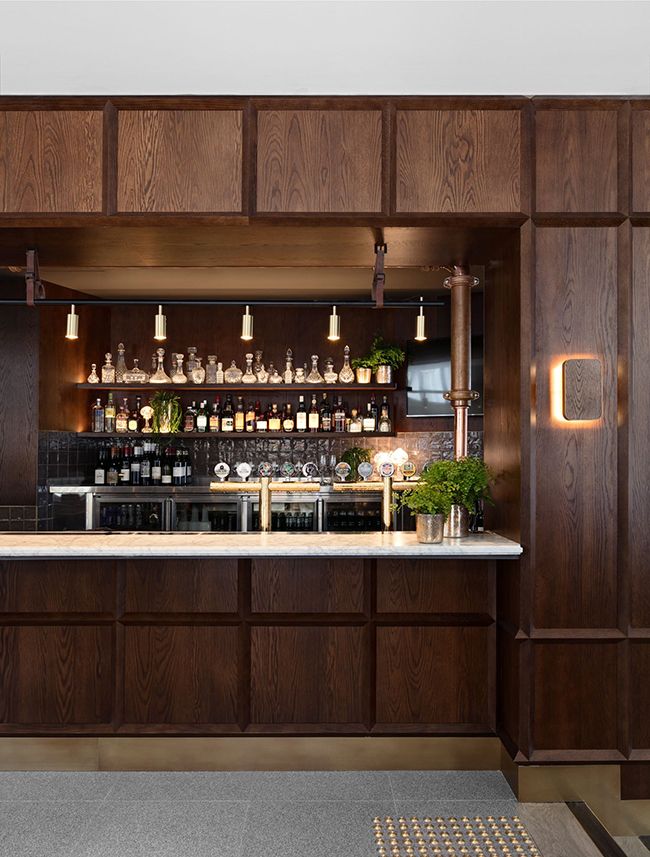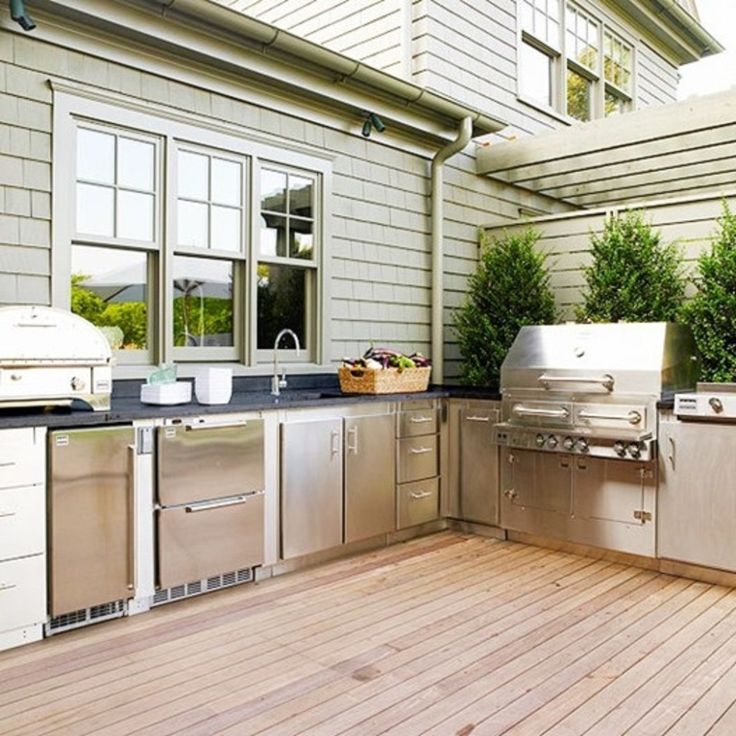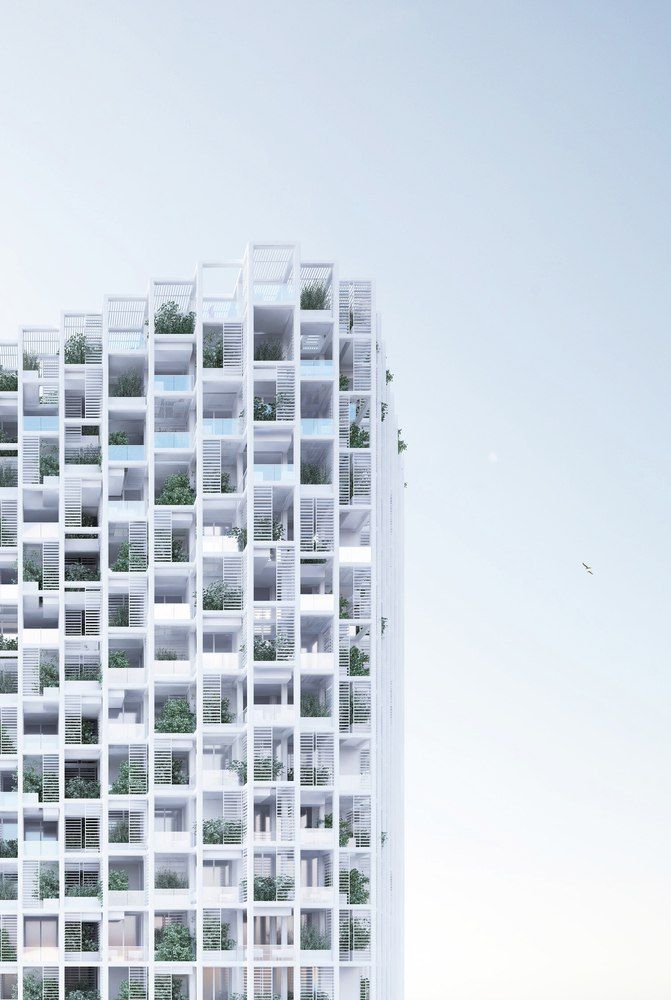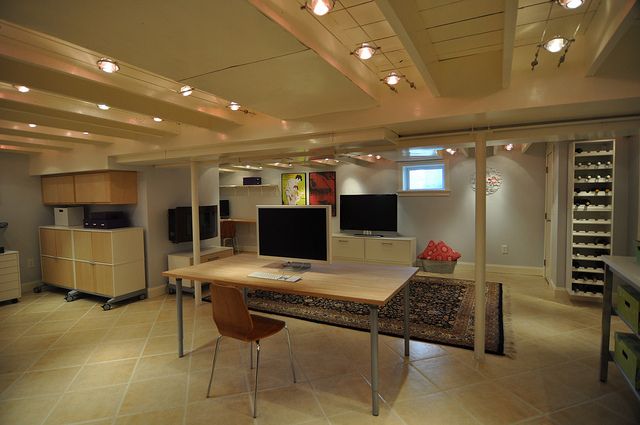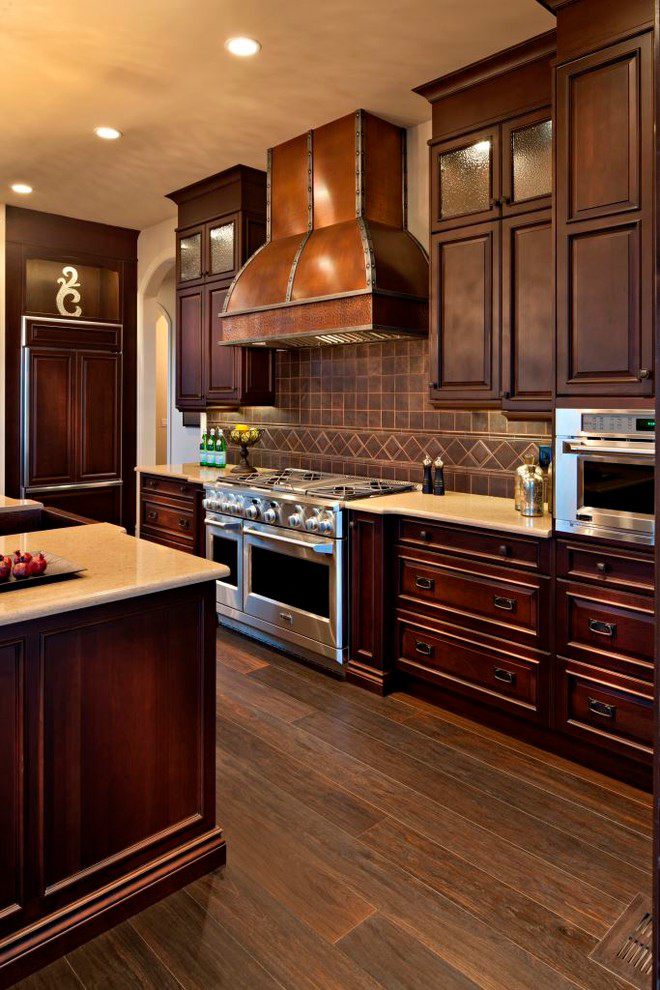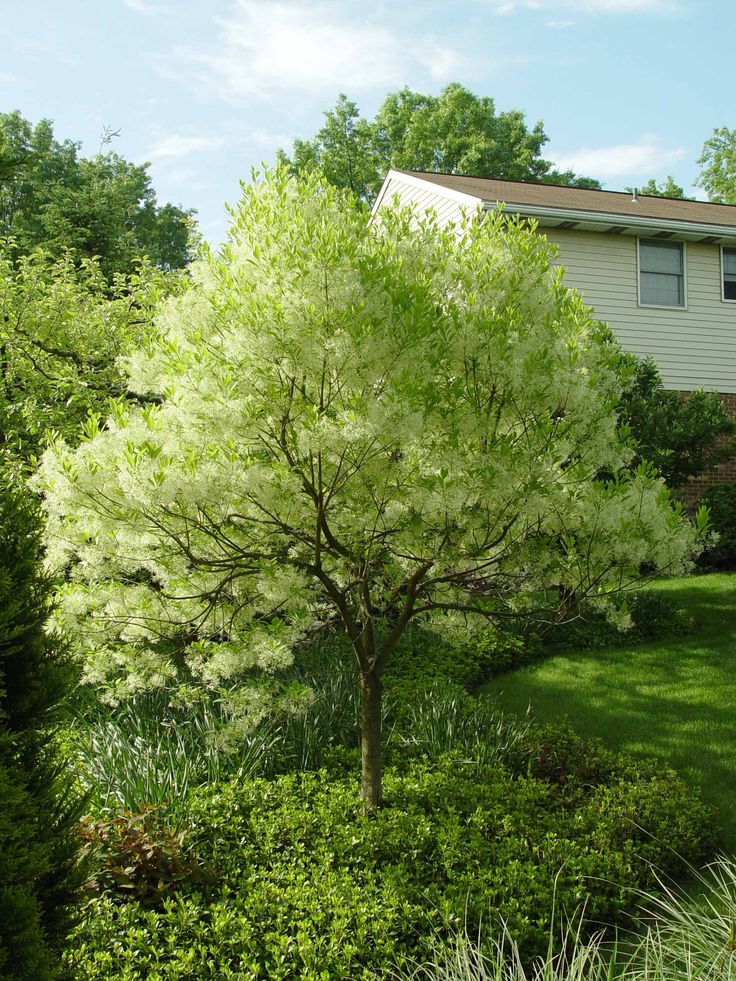Tips for decorating small rooms
14 Tips for Decorating a Small Space
Categories Settling In | Posted on | By: Laura MuellerTags: decorating tips, design, design tips, interior design, small home, small space, tiny house
◄ Prev | Next ►
Just because you don’t have a huge home doesn’t mean you can’t flaunt your style. Decorating a small space, just like decorating a large one, simply requires ingenuity of design and a good eye for what works and what doesn’t. And while the focus is naturally going to be a little bit different when you’re working with less square footage, the general rules of design are pretty much the same.
We promise, a small space doesn’t have to be a big challenge! So whether you’re trying to figure out how to put a personal spin on your new studio apartment or need some guidance on making the best use of space in a not-so-spacious house, follow the 14 tips below for decorating a small space and make your home shine.
- Let there be light
A small room can really open up with the right lighting. In addition to letting natural light shine in through the windows (skip the black out blinds!), use additional lighting throughout your space to bring in some additional warmth. If you don’t have the room for floor and table lamps, choose lighting options that don’t take up any prime real estate, like string lights, wall sconces, or pendant lighting.
- Keep bigger items on the perimeter of rooms
There’s no reason that you have to ditch large furniture items when you’re decorating a small space, but you do want to be strategic about where you put them. Maintain feelings of depth in a room by keeping larger items—think hutches, couches, and bookcases—up against the wall, instead of in the middle of the floor.
- Look for multi-purpose and/or folding furniture
Furniture that can do double duty will save you both space and money.
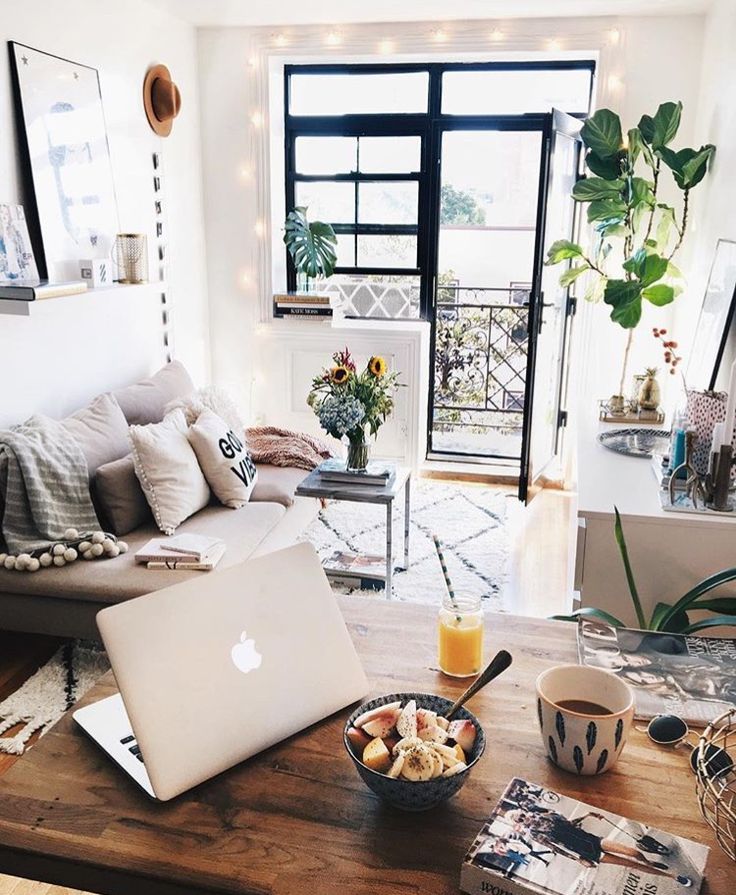 And thanks to the tiny house/tiny apartment trend, there is no shortage of ingenious furniture items that either serve multi-purpose uses or fold up to make space in your home when they’re not in use. Desks, dining tables, and even king-sized beds come in styles that can easily be put away to make more room to move around. Likewise, you can find furniture that serves a variety of purposes, such as beds that can convert into couches and side tables that can convert into desks.
And thanks to the tiny house/tiny apartment trend, there is no shortage of ingenious furniture items that either serve multi-purpose uses or fold up to make space in your home when they’re not in use. Desks, dining tables, and even king-sized beds come in styles that can easily be put away to make more room to move around. Likewise, you can find furniture that serves a variety of purposes, such as beds that can convert into couches and side tables that can convert into desks. - Make use of mirrors
Speaking of double duty, mirrors add both additional light and the feeling of additional space into rooms by reflecting back natural and non-natural lighting and giving an illusion of more square footage. They’re also practical on their own. Use one large mirror or arrange a few smaller ones throughout a room. You can even create a gallery wall of mirrors like you might do with art.
- Get rid of stuff
One of the big benefits of living in a smaller space is that it forces you to really edit down the amount of belongings that you have in your home.
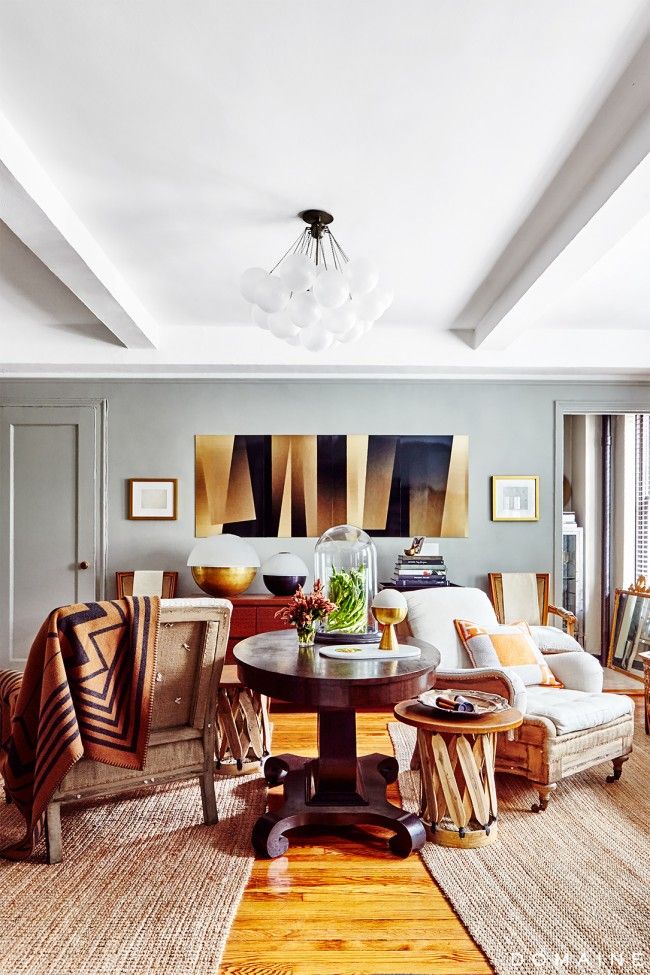 In turn, you end up getting rid of the things that don’t really serve a purpose in your life, be it because they’re impractical, useless, or just don’t bring you joy. If you struggle with the ability to get rid of stuff, there are resources that can help you learn how to do it. Decorating a small space necessitates a bit of inventory taking, otherwise you run the risk of overcrowding your space.
In turn, you end up getting rid of the things that don’t really serve a purpose in your life, be it because they’re impractical, useless, or just don’t bring you joy. If you struggle with the ability to get rid of stuff, there are resources that can help you learn how to do it. Decorating a small space necessitates a bit of inventory taking, otherwise you run the risk of overcrowding your space. - Beware of clutter
Less is more when it comes to creating a well-designed small space. On the same note as the tip above, you want to keep the general amount of stuff you own to a minimum when you don’t have a ton of room to work with. But keeping clutter down goes even further than that. Be mindful of leaving plenty of open space in your small house, both for ease of movement and for maintaining utility. This applies to all visible areas, from the floor to your countertops to the amount of space you allow between furniture items.
- Get creative with storage
There are so many great storage options out there that also serve as beautiful pieces of décor.
 Choose furniture items that provide you with additional storage solutions, like ottomans that can store linens and under the bed storage that looks like cool cabinetry. Try to find ways to store your items without just shoving everything into a closet.
Choose furniture items that provide you with additional storage solutions, like ottomans that can store linens and under the bed storage that looks like cool cabinetry. Try to find ways to store your items without just shoving everything into a closet. - Go bold
Small spaces lend themselves very well to bold colors, prints, and textures, just make sure you mix in some neutrals as well so that you don’t overwhelm the room. If you’re worried about going too bold, use colors and prints in smaller ways—such as on an accent wall, throw pillows, or even just picture frames. Or, go big and put up some bright and colorful wallpaper or finally buy that blue velvet couch you’ve always wanted. As long as you secure some balance in the room, there’s no reason you can’t also add in a touch of daring color or pattern.
- Use large rugs
Decorating a small space is all about tricking the eye into seeing more than there really is.
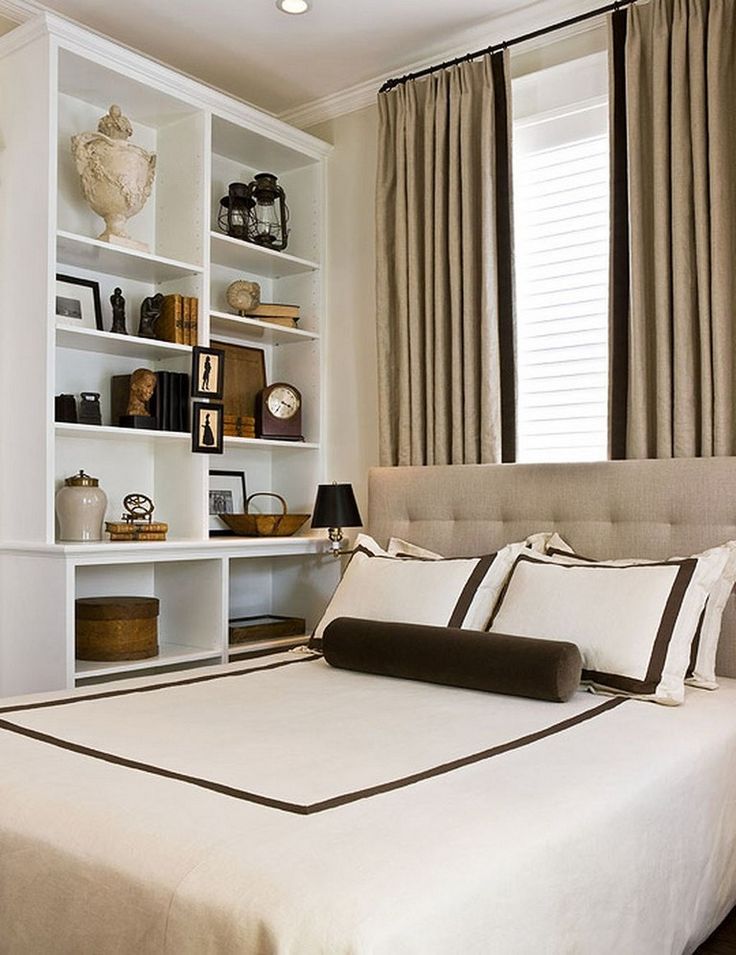 When you use small rugs in a small space, you see—and think—small. Decorating with large rugs, however, give a sense of grandeur and the feeling of a larger room. Ultimately, the shape of a room and the furniture within it will dictate the best size rug to purchase, but always aim to go as big as you can.
When you use small rugs in a small space, you see—and think—small. Decorating with large rugs, however, give a sense of grandeur and the feeling of a larger room. Ultimately, the shape of a room and the furniture within it will dictate the best size rug to purchase, but always aim to go as big as you can. - Take advantage of vertical space
Don’t neglect your walls. Making the most use of vertical space means both playing around with taller items and affixing your walls with things like shelving and art that add vertical depth in addition to the spaciousness you’ve worked to create on the floor. If you have a piece you really love but can’t find a place for—a beloved vase, for instance—hang up a secure shelf and put it on there instead. And when you’re hanging drapes, install the rod only about 2 inches below the ceiling or crown molding, which adds an illusion of extra height.
- Brighten up with plants and flowers
Adding greenery and flowers to your small space can breathe additional life and style into it as long as you’re careful not to overcrowd.
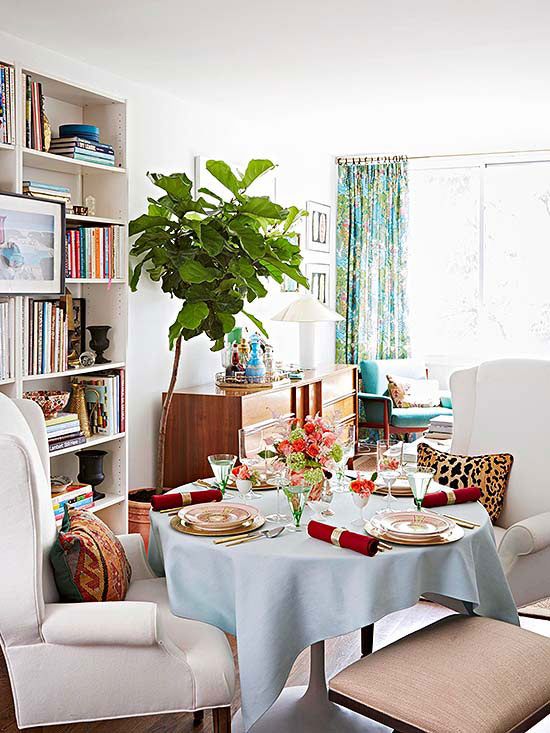 Do keep in mind however that dead or dying plants will have the opposite effect. If you’re worried that you won’t be able to keep up with the responsibility of maintaining your plants and flowers (or if you just don’t have much of a green thumb), there are great options for fake ones that look like the real thing. And don’t worry—fake plants have the seal of approval from style maven and Fixer Upper star Joanna Gaines, so they’re no longer a design taboo.
Do keep in mind however that dead or dying plants will have the opposite effect. If you’re worried that you won’t be able to keep up with the responsibility of maintaining your plants and flowers (or if you just don’t have much of a green thumb), there are great options for fake ones that look like the real thing. And don’t worry—fake plants have the seal of approval from style maven and Fixer Upper star Joanna Gaines, so they’re no longer a design taboo. - Play around with symmetry
We’re naturally drawn to symmetry—in faces, in nature, and in homes. If you’re really intent on having a ton of seating in your tiny living room or you just can’t do without some extra storage cabinets, make them work by having the pieces mirror each other in the room. It will make the space feel cleaner and appear more pleasant to the eye.
- Utilize nooks and corners
A nook that you might otherwise leave empty in a larger space can be used in a small space for additional functionality, such as putting in a desk area or a bar table.
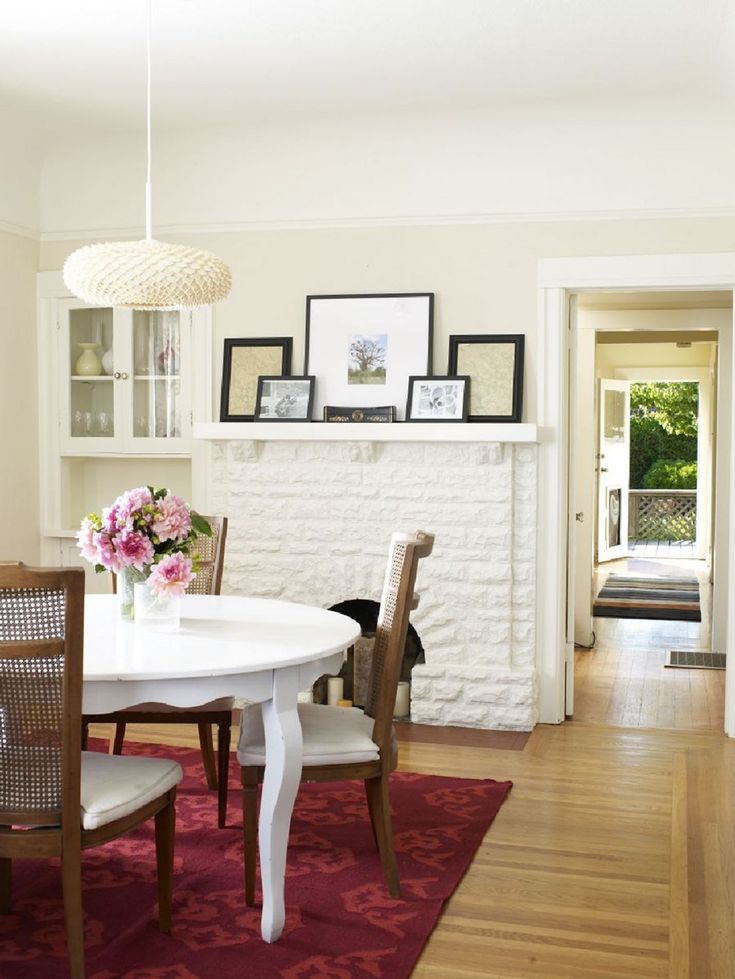 If it won’t clutter the room too much, try to think of creative ways to take advantage of often under-utilized nooks and corners instead of chalking them up to wasted space.
If it won’t clutter the room too much, try to think of creative ways to take advantage of often under-utilized nooks and corners instead of chalking them up to wasted space. - Divide and conquer
You can divide up your small space without making it feel too tight by using sheer curtains, rice paper room dividers, or open shelving to create separate spaces without cramping up your living area. All of these options allow light to continue to shine through, which is crucial for keeping your space feeling as airy and open as possible. These sorts of dividers also act as dramatic design elements in their own right, and add additional flair to your home.
Work with your intuition when decorating a small space, and don’t try to work in anything that doesn’t feel or look right. Ultimately, the goal is to take as much advantage as you can of the space that you do have, maximizing its possibilities and really showing it off at its best. And while no design rule is set in stone, the tips above should help you do just that.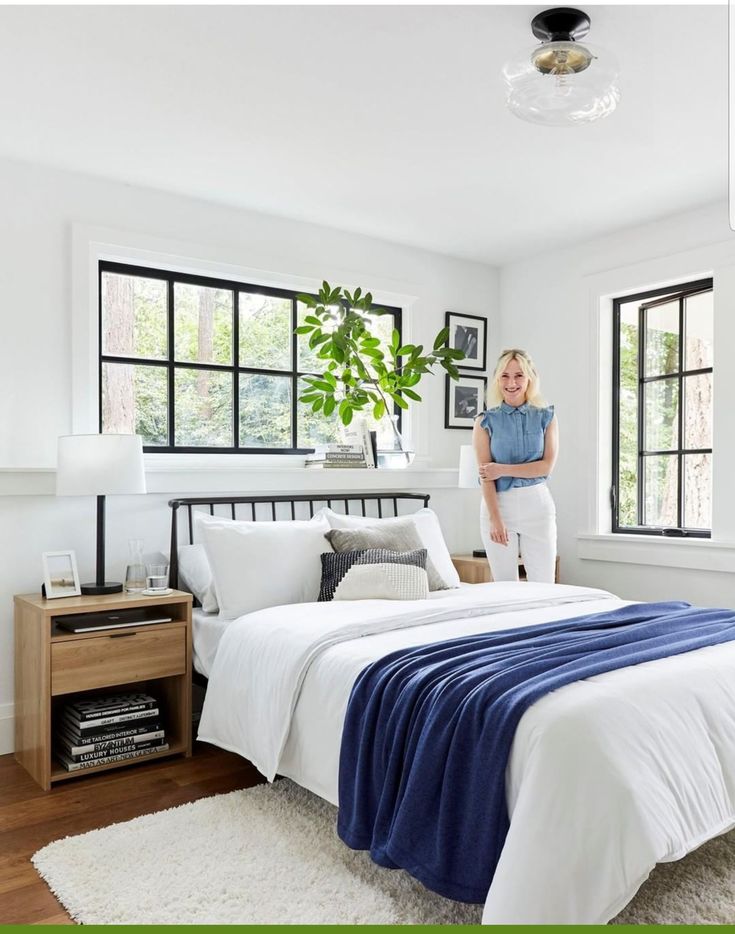
10 Tips for Decorating Small Spaces
Big Ideas
Get our expert tips for decorating small spaces in your home or apartment. Learn how to decorate in style without creating clutter!
By Elizabeth Stamp
Decorating small spaces can feel like an impossible puzzle. You want to fit as much in as possible, but the room mustn't feel cramped. You want it to be filled with personality, but it can't look chaotic and cluttered. But it's possible to have a small space that's as stylish (or perhaps even more so) as their sprawling counterparts. Whether you’re starting out in a studio apartment or choosing to live a more minimalist existence, you don’t need to sacrifice style. We’ve gathered our favorite ideas for decorating small spaces to help you tackle your own petite dwelling.
Keep the Floor Clear
You need space for the essentials, but even the most perfectly decorated small room doesn’t work if you can’t walk in it.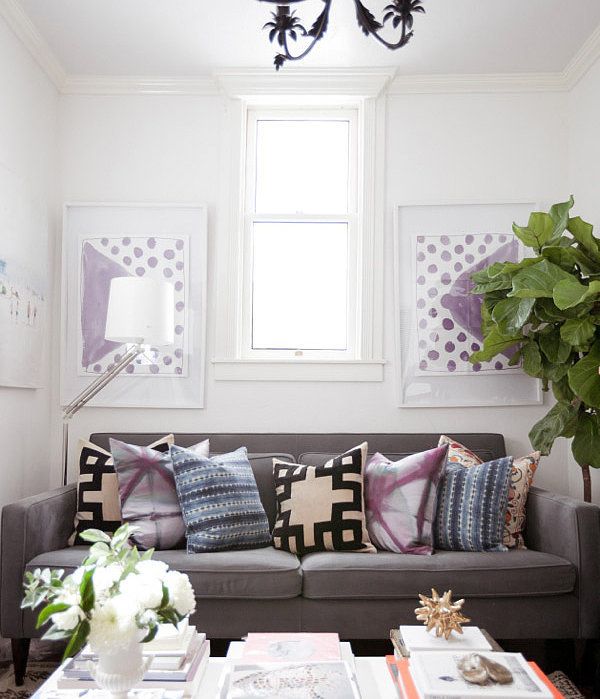 Try floating pieces, such as shelves and nightstands, to keep the ground clear of obstacles and create space for extra storage beneath if needed. Opt for sconces and wall lights rather than floor lamps.
Try floating pieces, such as shelves and nightstands, to keep the ground clear of obstacles and create space for extra storage beneath if needed. Opt for sconces and wall lights rather than floor lamps.
A bedroom—and uncluttered nightstand solution—by designer Clara Jung.Photo: Clara Jung
Go for Folding Pieces
You may need a desk and a dining table, but do you really need them 24-7? Consider installing furnishings that can fold up when not in use. You’ll free up floor space and avoid the stacks of mail and work that inevitably pile up on these surfaces. If you have a one-wall kitchen, folding doors can conceal clutter when not in use.
Focus on Lighting
Small spaces can often end up feeling dark due to small or nonexistent windows. Make up for the lack of natural light by adding plenty of light sources in every room, from the kitchen to the bedroom. Combine striking ceiling fixtures—either a pretty pendant or elegant flush mount, depending on your ceiling height—with sconces or table lamps for a cozy and bright atmosphere.
Designer Ashley Darryl put a modern spin on her friend Jeremy Globerson’s one-bedroom apartment in Manhattan by using clean-lined furnishings and carefully selected accents. “We chose a mixture of vintage and new pieces to help us create the minimal and inviting space we were after,” says Darryl. Sconces by Apparatus and a painting by Hector Frank are displayed above the Mitchell Gold + Bob Williams sofa in the living room.Photo: Brett Beyer
Mirrors Are Your Friend
If you’re not blessed with an abundance of natural light, mirrors can help you make the most of what you do have by reflecting it around the room. Mirrors can also help make the space feel bigger, giving the illusion of a few more square feet. Consider lining a wall with a large mirror or creating a gallery wall of different sizes and shapes.
Vintage French mirrors and a Colombian fan enliven the guest bath; the wall tile and sink are both coral stone, and the sink fittings are by Axor.
Choose the Right Rug
A rug is the one item you definitely don’t want to skimp on, size-wise. A tiny rug will make the room feel equally small. Pick a floor covering that’s large enough so most of the furniture will sit on it, or go wall-to-wall.
A tiny rug will make the room feel equally small. Pick a floor covering that’s large enough so most of the furniture will sit on it, or go wall-to-wall.
Most Popular
In the living room of the Manhattan apartment designer Paris Forino transformed for a luxury real estate broker and his fashion designer husband, vintage leather-and-walnut chairs mingle with a Poltrona Frau marble cocktail table and a hand-knotted silk rug. The painting is by Alex Katz.Photo: Peter Murdock
Don’t Be Afraid to Go Bold
Having a small space doesn’t mean it has to be a white box. You can still go bold with color and embrace the size of your apartment. A darker shade of paint on the walls and ceiling can make the space feel like a jewel box.
Lacquered walls and a custom-made St. Thomas–style sofa upholstered in a Lee Jofa velvet set a glamorous tone in the living area of Todd Alexander Romano's New York City pied-à-terre. A Ward Bennett wicker Sled chair and prints by Robert Goodnough and Josef Albers provide lively counterpoints.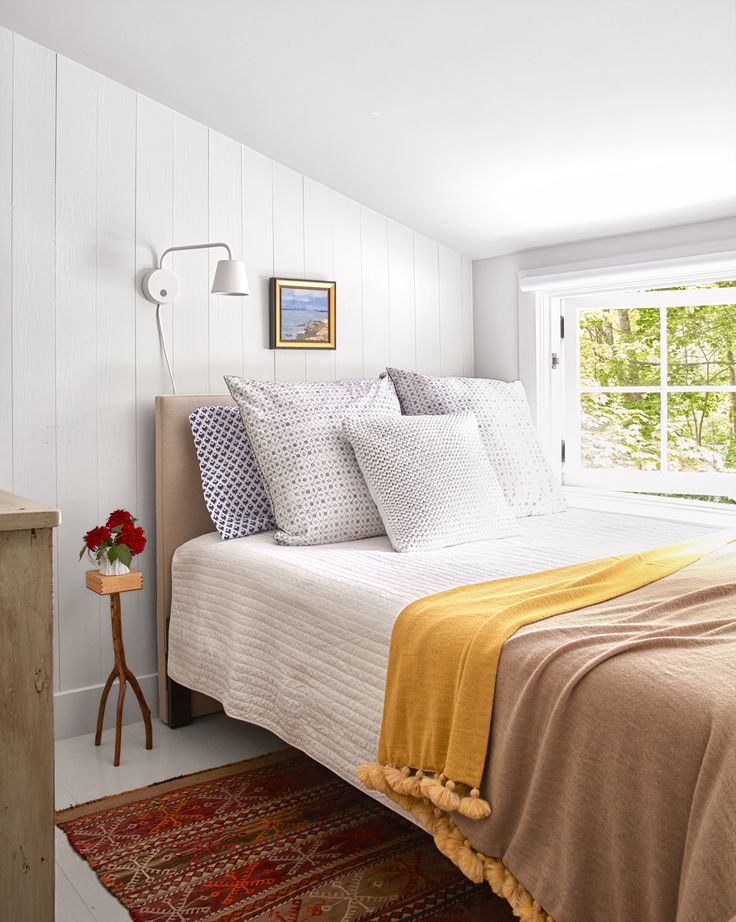 Thomas Loof
Thomas Loof
Keep It Cohesive
There are only so many things to look at in a small space, so make sure they all fit. Stick to a limited color palette, whether it’s light and airy or dark and dramatic. Looking at items with an editor’s eye will help make sure pieces really belong and keep the space from becoming cluttered.
Most Popular
Photo: Stoffer Photography Interiors
Find Pieces that Earn Their Place
Make the most of your space by finding furnishings that also boast storage. Opt for a bed with built-in drawers or benches and ottomans with space to hide away extra blankets or sweaters. In a small space, every piece needs to pull its weight: A daybed can serve as both a sofa and a guest bed.
Photo: Melissa Oholendt
Let Pieces Breathe
Nothing screams "I don’t have enough room" quite like furniture pressed up against the wall and tucked so tightly together that it’s practically stacked. Pull furnishings away from the wall if you can and make sure there’s space between pieces.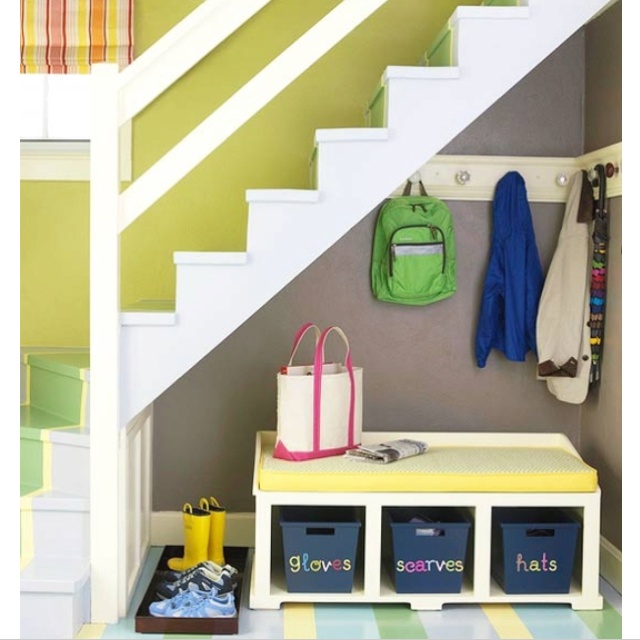 (You may have to get rid of anything that isn’t used on a daily basis, like side tables or accent chairs.)
(You may have to get rid of anything that isn’t used on a daily basis, like side tables or accent chairs.)
Most Popular
In the living room, delicate moldings were custom designed to match the apartment’s original ones, while walls painted in Benjamin Moore’s "Decorator's White," a color used throughout the apartment. “We wanted the home to feel light and bright,” says Greenberg, “and let the materiality of the space speak for itself rather than introduce a vivid palette.” Slim accent tables are from a concept store in Copenhagen called By Lassen.Photo: Courtesy of Space Exploration Design
Play With Scale
There’s no need to use pint-size furniture and decor in a small space. The key is choosing a few statement pieces that will really draw the eye. You can use regular-size furniture and large-scale art; you’ll just need to use fewer pieces in the room overall.
Photo: Carmen Chan
12 clever design hacks for a small room interior
1 Transparent furniture
Transparent furniture is at the peak of popularity, and this is understandable: it is a functional solution that practically does not overload the space.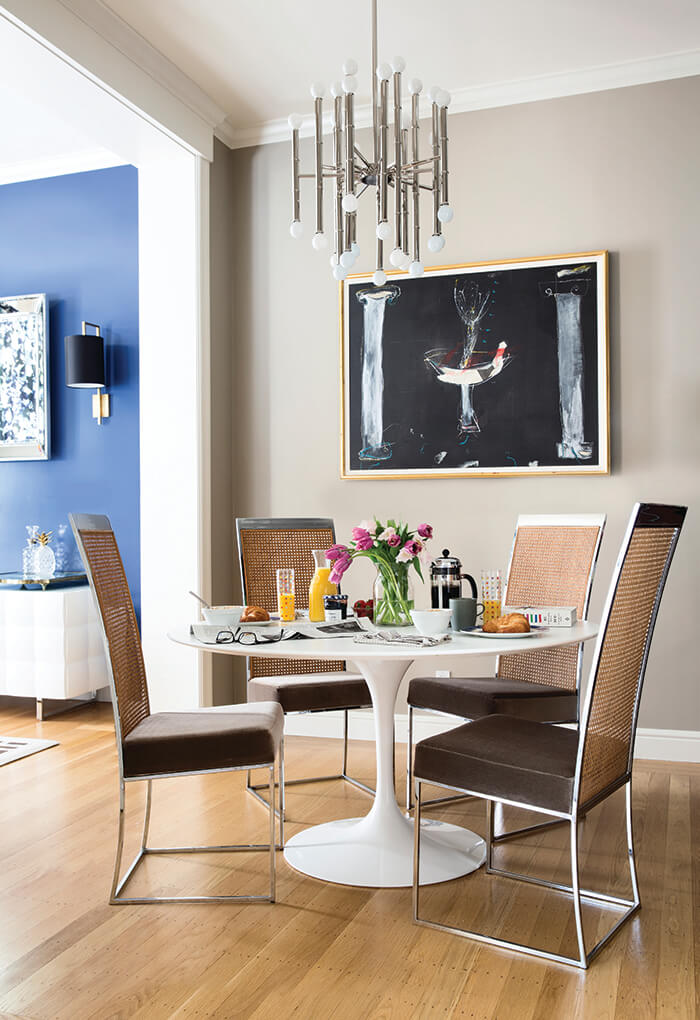
a photo
Photo: Instagram design_dizart
Photo: Instagram mebelartby
Photo: Instagram dasha.ukhlinova
Photo: Instagram iuliagre
Photo: Instagram shipova_project
Photo: Instagram acrylshik.ru
Photo: Instagram shishkina111777
Modern designers are especially willing to use transparent furniture in the design of small rooms. Moreover, it is possible to “dissolve” in space in this way both individual elements of the situation, and, for example, an entire dining group.
6Photo: Instagram chelseadesignquarter
Photo: Instagram vikkimaywilson
Photo: Instagram capitol_carpets_uk
Photo: Instagram musthaveslvrs
By the way, a similar effect can be achieved by turning to patterns in the form of diamonds or zigzags.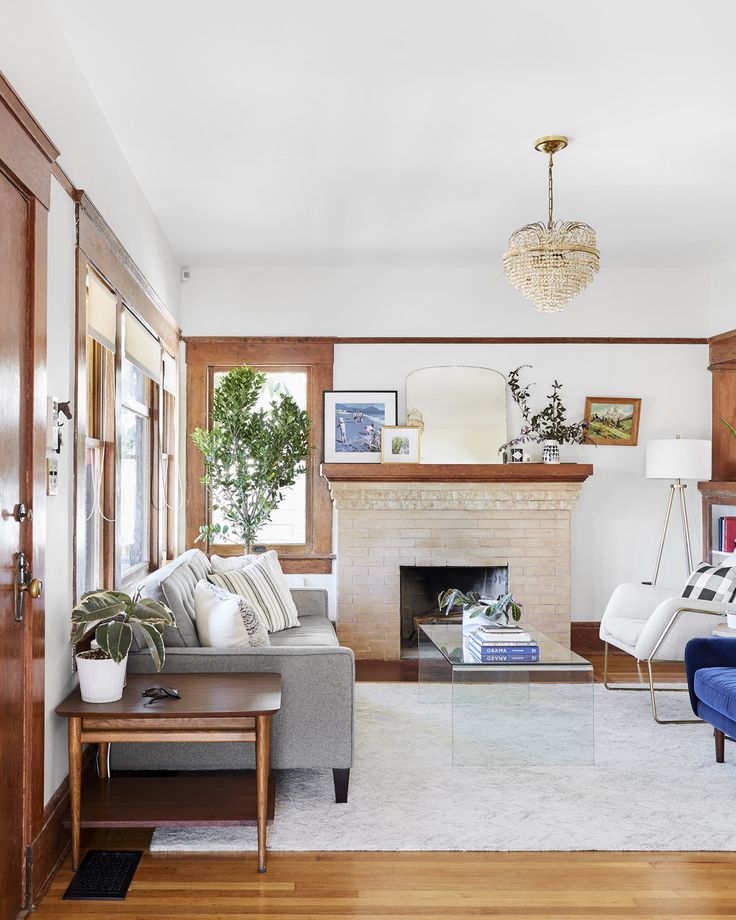
Photo: Instagram edmeephotography
3 Transforming furniture
Transforming and multifunctional furniture is a real salvation for owners of small rooms. Wardrobe beds and sofa beds, folding tables, folding chairs... Be sure to check out the range of modern furniture manufacturers: you will surely like many solutions.
Design: Riksbyggen
4 Hanging decor
Didn't find room for decor on the walls? Leave their surface for more functional tasks - and turn to hanging decor.
Photo: Instagram sagarti_light
Photo: Instagram decor_with_soul
5 Accent surface
Another way to divert attention from the dimensions of the room is to design an accent surface. It can be a contrastingly painted or colorfully wallpapered wall, or, for example, a patchwork tiled floor.
Willy-nilly, your gaze will fall on this part of the small room, and the modest size of the room will begin to bother you much less.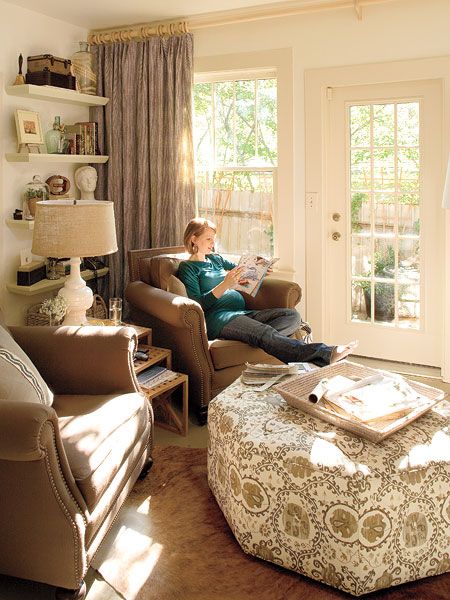
Photo: Instagram scandi_ali
6 Textured materials
Textures make the space more interesting, expressive and voluminous, and also distract attention from the dimensions of the room (which is very important for small rooms).
Design: Midnatt
Choose natural materials and natural textiles with a strong texture: wood, linen, knitted and wicker decor items are great options.
Design: Stadshem
7 Low furniture and low-lying decor
By visually raising the ceiling, you can visually make a small room a little more spacious. A simple but effective trick will help with this: choose low furniture for the interior, and also place the wall decor not too high. Thus, you can deceive your own perception of the dimensions of the room.
Design: MYCS
Design: Ahre
Design: Stadshem
Design: Stadshem
8 More light
There should be no dark corners in the interior of a small room: they “eat up” the space, visually making the room even smaller.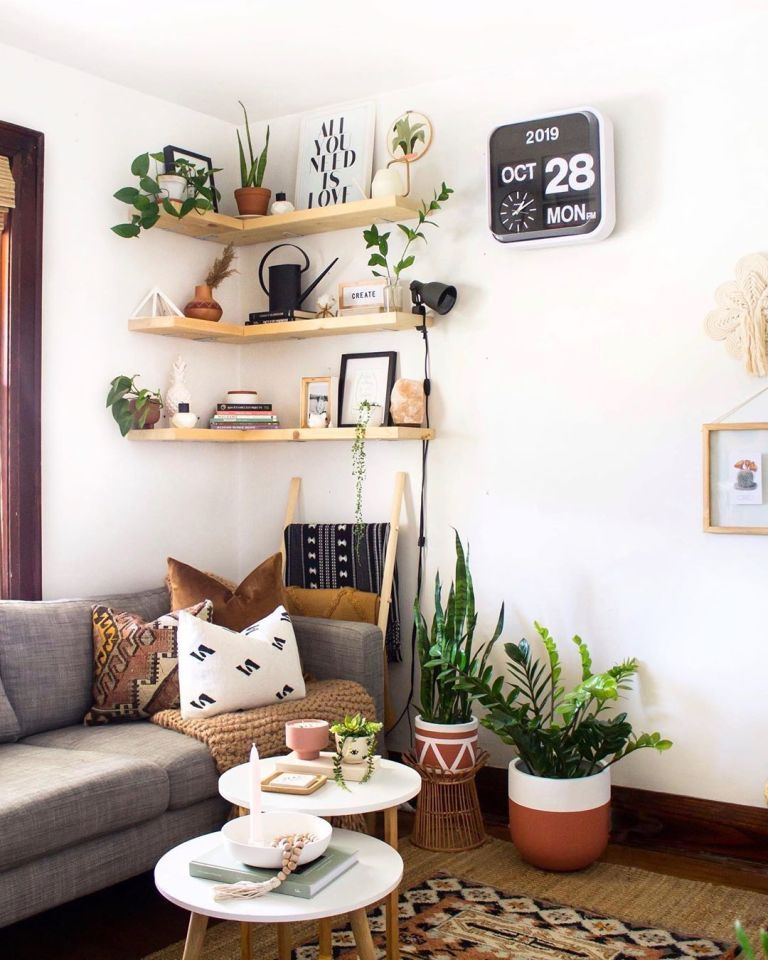 Let in more natural light: ditch curtains or replace them with ones that let in as much sunlight as possible.
Let in more natural light: ditch curtains or replace them with ones that let in as much sunlight as possible.
Design: Historiska Hem
Design: Historiska Hem
Design: Entrance Makleri
Design: Stadshem
Add more artificial light sources, as well as glossy, metallic and other reflective surfaces.
9 Mirrors
Active assistants in the fight for increasing light and visual expansion of space - mirrors and mirror surfaces (for example, tiles, mosaics, panels).
Design: Fantastic Frank
10 Small patterns and prints
Too large, active prints and patterns in a small room will look out of place - and only further emphasize the lack of free space.
If plain surfaces are not to your liking, opt for neater, finer patterns.
Design: Sarah Widman
11 Interior doors in the color of the walls
We have already said more than once that storage systems matched to the color of the walls visually clutter up the space much less and look more appropriate in small rooms.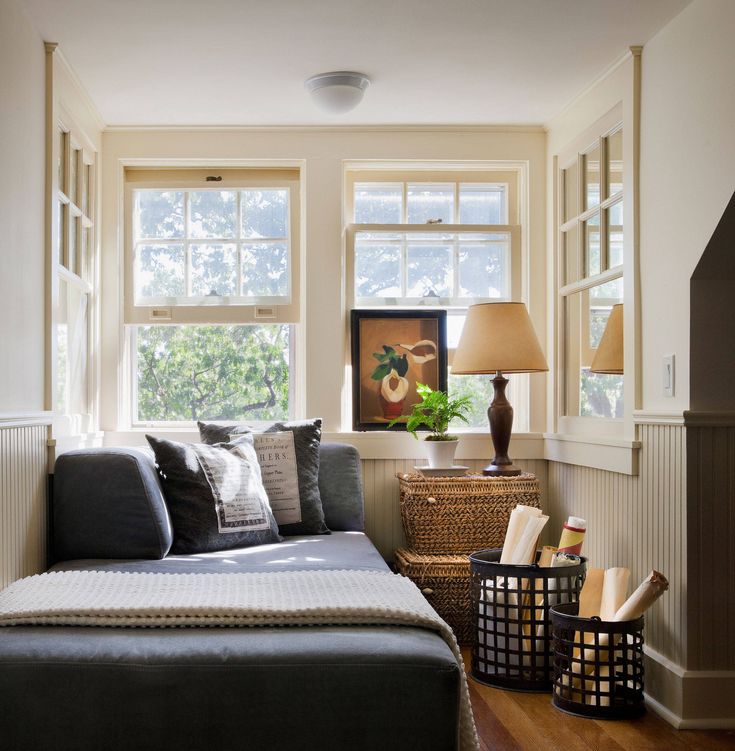
But there is one more trick: similarly, interior doors, decorated in a shade close to the color of the walls, look much lighter and help to additionally relieve the interior.
Design: Stadshem
12 Grounds
No matter how hard you try, no matter what design techniques you use, the area of the room is a constant value. However, no one canceled the adjacent territory: the entrance hall, the corridor, the balcony. Why not move some of the storage there? Or, say, not organize a home mini-office there, saving some space in the room?
Design: Alvhem
10 Non-Obvious Ways to Make a Small Room Bigger
1 Solid Colors
Light colors are the best way to decorate a small room. light, in such an interior there should be very little, ideally one or two. Therefore, before repairing and decorating, select the main color, find its name according to the Pantone table and at the same time write down a couple of the next shades. This will simplify the search for finishing materials. Print the selected shades on a color printer and go with them to a furniture store, behind curtains and doors, so as not to try to determine “by eye” how much they will fit into the interior.
Print the selected shades on a color printer and go with them to a furniture store, behind curtains and doors, so as not to try to determine “by eye” how much they will fit into the interior.
Instagram: @quotatis_es
Instagram: @renderdelivery
Instagram: @angelo_the_creator
2 Pure straight lines
The smaller the room, the easier it should be perceived. Therefore, choose laconic furniture without unnecessary decorations, avoid a large number of accessories on the walls. Ideally, if there are no large differences in height or a bright contrast of shape and material between adjacent pieces of furniture.
Instagram: @splendidspaces
Instagram: @portobellostreet
Instagram: @homesandgardensuk
3 Lack of small details
Don't rush to complete the room with a lot of small and flashy accessories. Start with some minimalism, let yourself get used to the interior and understand what accents it lacks. Perhaps a couple of well-chosen little things will perfectly complete the image.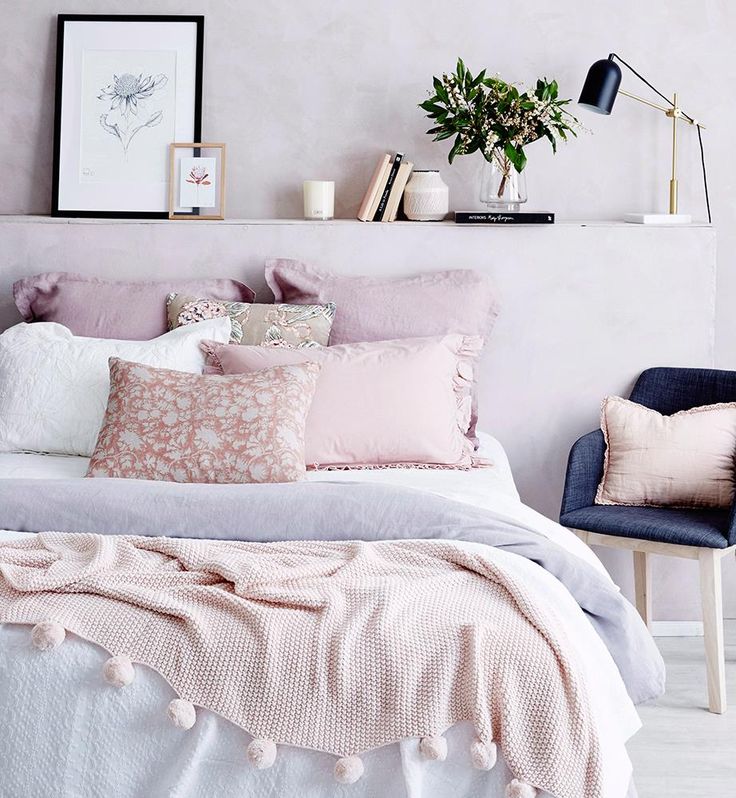 But the excess will make the room overloaded and emphasize a small area. This is especially true of window sills - it is better to leave them empty and not force the window.
But the excess will make the room overloaded and emphasize a small area. This is especially true of window sills - it is better to leave them empty and not force the window.
Instagram: @quotatis_es
Instagram: @delphine_gaillard
4 Open storage
You have to be careful with open shelves and racks - they must not be overloaded and must be kept in order. In addition, the rule of maintaining a single color direction applies to them too. Therefore, if you need a bookshelf, take care of the same book covers, this will preserve their appearance and turn them into beautiful accessories.
Instagram: @boconceptnz
Instagram: @im_hause_n
Instagram: @cecilegs_misc
5 Furniture with legs
Try to find furniture with legs for a small room: sofa, wardrobe, armchairs. Legs make any furniture visually a little lighter, which will benefit the interior.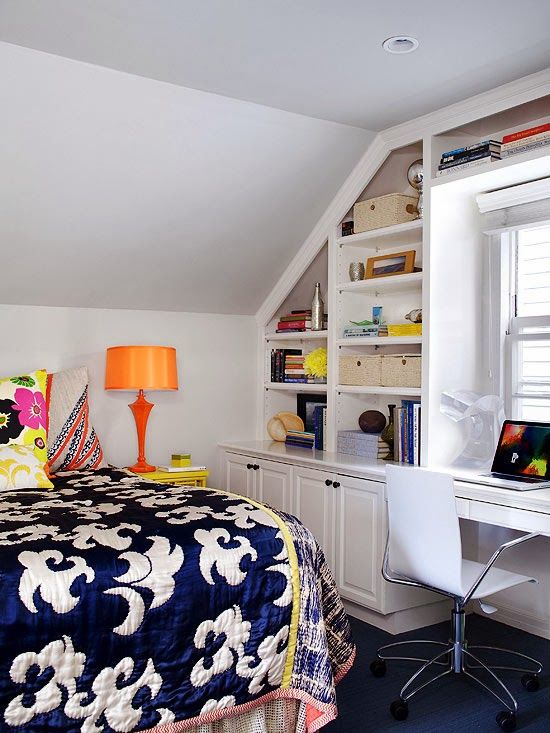
Instagram: @sonnymoarts
Instagram: @boconceptnz
Instagram: @worldruggallery
6 Tall cabinets
Surprisingly, ceiling-height cabinets look better in a small space than dressers and two-thirds of the height of the room. The fact is that visually they look like a continuation of the wall, especially if they match in color with it. This is true for both the bedroom and the kitchen. In addition, it will increase the amount of storage area.
Instagram: @nataliya_designer_spb
Instagram: @cosentinoitalia
7 Floor matching the wall color
bedrooms. If this is not possible, try to find a light carpet.
Instagram: @lavien_home_decor
Instagram: @boconceptnz
8 Wallpaper with discreet pattern
When choosing wallpaper, pay attention to models with discreet pattern, textured.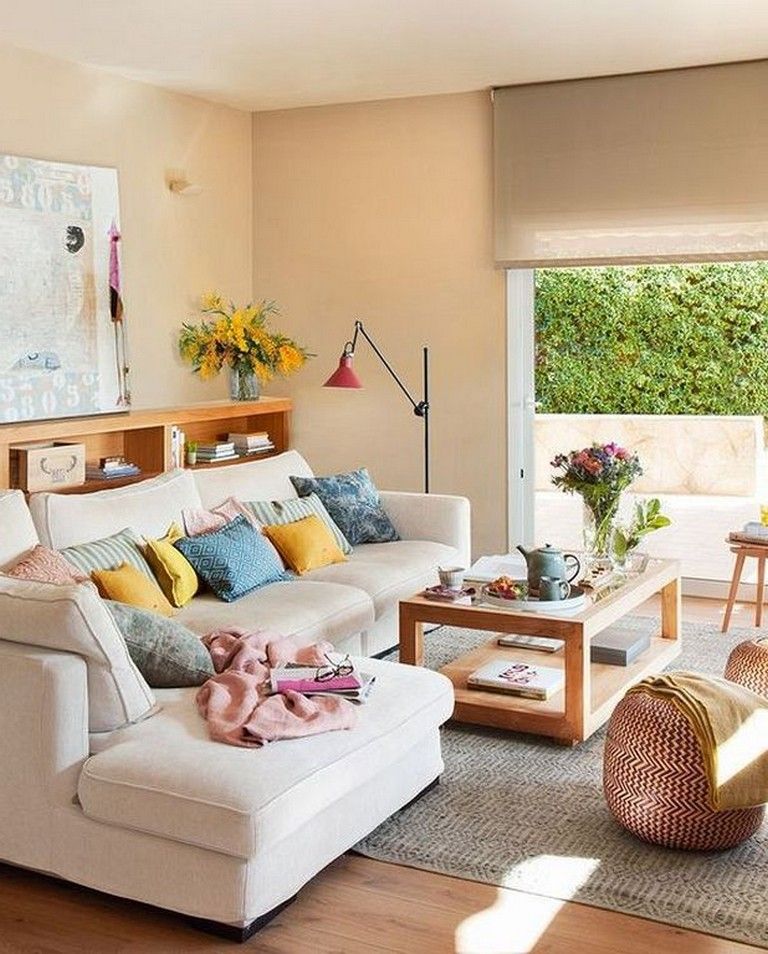 Due to the fact that the interior does not have a wide variety of colors, the room may look a little boring and a variety of textures will solve this problem. You can try to decorate a contrasting wall with light wallpaper with a small, infrequently repeated bright pattern, for example, polka dots or small flowers.
Due to the fact that the interior does not have a wide variety of colors, the room may look a little boring and a variety of textures will solve this problem. You can try to decorate a contrasting wall with light wallpaper with a small, infrequently repeated bright pattern, for example, polka dots or small flowers.
Instagram: @design.bear
Instagram: @blackhorsemills
9 Placement of curtains correctly
In order to visually enlarge the room, you need to increase the window and raise the ceilings. One way to do this is to hang a curtain rod above the top edge of the window. Curtains at the same time should be fabric, without unnecessary folds, just above the floor or just below the ceiling.
Instagram: @mel_g_walters
Instagram: @shabbychicindo
Instagram: @dagency.be
10 More light
If there is not enough natural light in the room, add more additional light sources.
